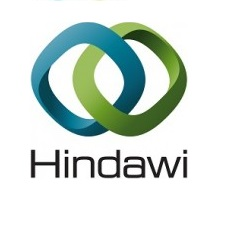| مشخصات مقاله | |
| انتشار | مقاله سال ۲۰۱۸ |
| تعداد صفحات مقاله انگلیسی | ۶ صفحه |
| هزینه | دانلود مقاله انگلیسی رایگان میباشد. |
| منتشر شده در | نشریه هینداوی |
| نوع مقاله | ISI |
| عنوان انگلیسی مقاله | Determination of 4-Methylimidazole in Ammonia Caramel Using Gas Chromatography–Tandem Mass Spectrometry (GC-MS/MS) |
| ترجمه عنوان مقاله | تعیین ۴-متیلایمیدازول در کم خونی کاراملی با استفاده از گاز کروماتوگرافی – طیف سنجی توده جفت |
| فرمت مقاله انگلیسی | |
| رشته های مرتبط | پزشکی |
| گرایش های مرتبط | خون شناسی |
| مجله | مجله کیفیت غذا – Journal of Food Quality |
| دانشگاه | Poznan University of Life Sciences – Wojska Polskiego – Poland |
| شناسه دیجیتال – doi | https://doi.org/10.1155/2018/4696074 |
| کد محصول | E8063 |
| وضعیت ترجمه مقاله | ترجمه آماده این مقاله موجود نمیباشد. میتوانید از طریق دکمه پایین سفارش دهید. |
| دانلود رایگان مقاله | دانلود رایگان مقاله انگلیسی |
| سفارش ترجمه این مقاله | سفارش ترجمه این مقاله |
| بخشی از متن مقاله: |
| ۱٫ Introduction
Caramel is one of the worldwide most popular food colorants, labeled with the symbols E150a: caustic caramel, E150b: caustic sulfte caramel, E150c: ammonia caramel, and E150d: sulfte ammonia caramel. It is added for variety of foods and beverages, such as sauces, wines, beers, desserts, confectionary products, cola beverages, and baked goods [1]. One of many heterocyclic processing compounds formed in the production of ammonia caramel is 4(5)-methylimidazole (4-MeI), which is a product of Maillard reaction. At neutral to basic pH solutions there are two tautomers: 4- methylimidazole and 5-methylimidazole exist in equilibrium [2]. Methylglyoxal was proposed as the starting precursor in 4-MeI formation (Figure 1). In 2007 the National Toxicology Program (NTP) stated 4-methylimidazole as a cancer causing chemical and in 2011 the State of California also specifed 4-methylimidazole in Proposition 65 as a carcinogen. Te level of 4-MeI, which is deemed to pose no signifcant risk, is 29 �g/day [2]. Te caramel matrix is very complex and it contains high number and amount of diferent compounds formed during caramelization process. One of those numerous components is 4-MeI. Its chemical properties, especially high polarity and basic character, make 4-MeI extraction and purifcation challenging steps. So far, analysis of this compound by GC/MS method was performed afer ion pair extraction combined with derivatization process and this technique seemed to be the most efective one; however some recent studies showed the possibility of 4-MeI analysis by solid phase microextraction (SPME) method without derivatization [4]. Bis(2-ethylhexyl) phosphoric acid (BEHPA) is an ion pairing compound used in extraction of basic compounds and alkyl chloroformates (such as isobutyl chloroformate, IBCF) proved be a good derivatization reagents providing formation of N-alkoxycarbonyl esters [5]. Te Codex Alimentarius of the World Health Organization has established maximum concentration of 4- MeI in caramels III and IV, which is 250 mg kg−۱ on an equivalent colour basis. It caused the necessity of developing and improving analytical extraction techniques, allowing for reliable detection of 4-MeI level in food and food additives matrices [6]. Described method of extraction was successfully applied for determination of 4-MeI in cofee [7]. Cunha et al. [8] used it to extract 4-MeI from soy and balsamic sauces and Karim and Smith [9] applied this procedure to determine the amount of 4-MeI in cooked meat. Te aim of this study was to develop a reliable and fast quantitation technique allowing for determination of 4-MeI in ammonia caramel produced on the pilot/industrial scale. Te novelty of the study was to utilize the selectivity of tandem mass spectrometry for the qualitative and quantitative analysis, whereas usually GC-MS in SIM mode was used for 4-MeI analysis. By eliminating matrix infuence in MS/MS (MRM) lower detection limits can be achieved. |
